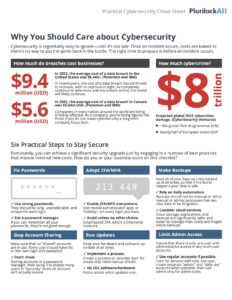In the rapidly evolving landscape of cybersecurity, one of the persistent and pervasive threats that organizations face is unauthorized credential use. This threat poses a significant challenge as it involves attackers exploiting stolen or compromised credentials to gain unauthorized access to sensitive systems, networks, and data. In this deep dive, we will explore what unauthorized credential use entails, why it matters, and delve into an in-depth analysis of its importance in the context of modern cybersecurity.
Understanding Unauthorized Credential Use
Unauthorized credential use, often referred to as “credential misuse,” occurs when malicious actors obtain and exploit legitimate login credentials to gain unauthorized access to systems or data. These credentials can include usernames, passwords, access tokens, and other authentication mechanisms. The attackers may obtain these credentials through a variety of means, including phishing attacks, data breaches, social engineering, or using malware to capture keystrokes.
Once attackers acquire valid credentials, they can circumvent traditional security measures and appear to be legitimate users, making detection and prevention more challenging. This form of attack can lead to data breaches, unauthorized data manipulation, financial fraud, and reputational damage.
The Significance of Unauthorized Credential Use
1. Ubiquity of Credential-Based Attacks:
Unauthorized credential use has become a prevalent attack vector in recent years. The rise of remote work and the increasing reliance on online services and cloud platforms have expanded the attack surface, providing more opportunities for attackers to target credentials. As a result, unauthorized credential use has become a favored technique among cybercriminals due to its effectiveness.
2. Evasion of Traditional Security Measures:
Traditional security measures often rely on perimeter defenses and signature-based detection methods, which are less effective against credential-based attacks. Since attackers appear as legitimate users with valid credentials, intrusion detection systems might not flag their activities. This underscores the need for more advanced security solutions that focus on behavior analysis, anomaly detection, and multi-factor authentication.
3. Privilege Escalation and Lateral Movement:
Compromised credentials can provide attackers with a foothold within an organization’s network. Once inside, attackers can use the stolen credentials to escalate privileges and move laterally across the network. This lateral movement enables them to access more valuable assets and sensitive data, increasing the potential damage they can inflict.
4. Data Breaches and Compliance Violations:
Unauthorized credential use is a leading cause of data breaches. When attackers gain access to sensitive data using stolen credentials, they can exfiltrate, manipulate, or even delete the data. This not only leads to financial losses but also exposes organizations to regulatory fines and legal liabilities for failing to protect sensitive information.
5. Reputation Damage:
News of a successful unauthorized credential use attack can severely damage an organization’s reputation. Clients, customers, and partners may lose trust if they perceive that their data is not adequately safeguarded. Restoring trust post-breach can be a long and arduous process.
In-Depth Analysis of Importance
A. Insider Threats and Compromised Accounts:
One critical aspect of unauthorized credential use is the insider threat. Insiders, whether current or former employees, contractors, or business partners, often possess valid credentials. If these credentials are compromised, either intentionally or unintentionally, the attacker gains access to internal systems without raising suspicion. This scenario highlights the necessity of robust access controls, regular credential audits, and employee training to mitigate insider threats.
B. Password Management and Hygiene:
Weak password practices and poor password hygiene contribute significantly to unauthorized credential use. Many users reuse passwords across multiple accounts or choose easily guessable passwords. Attackers take advantage of these tendencies, employing tactics like credential stuffing, where they use known username and password combinations from previous data breaches to gain unauthorized access. Educating users about strong password practices and enforcing multi-factor authentication can substantially reduce this risk.
C. Credential Monitoring and Detection:
Proactive monitoring of credential usage is paramount for early detection of unauthorized activities. By analyzing patterns of user behavior and employing machine learning algorithms, organizations can identify deviations from normal usage, thereby detecting potential unauthorized access attempts. Additionally, implementing adaptive authentication that triggers additional verification steps for suspicious activities can thwart unauthorized use even after initial access is gained.
D. Zero Trust Architecture:
Unauthorized credential use has prompted a shift towards Zero Trust architecture. This model assumes that no user or device should be inherently trusted, regardless of their location or credentials. Instead, it advocates strict access controls, continuous verification, and least privilege principles. By adopting a Zero Trust approach, organizations can significantly mitigate the risks associated with unauthorized credential use.
E. Threat Intelligence Sharing:
The cybersecurity community’s collaborative efforts play a vital role in combating unauthorized credential use. Sharing threat intelligence related to new attack techniques, compromised credentials, and emerging threats helps organizations stay ahead of cybercriminals. Platforms such as Information Sharing and Analysis Centers (ISACs) facilitate the exchange of critical threat information among industries.
F. Regulations and Compliance:
With the implementation of regulations such as the General Data Protection Regulation (GDPR) and the California Consumer Privacy Act (CCPA), organizations are now held more accountable for safeguarding customer data. Unauthorized credential use that leads to data breaches can result in severe penalties. This regulatory landscape underscores the importance of proactive security measures to prevent unauthorized access.
https://plurilock.com/answers/unauthorized-credential-use-what-does-unauthorized-credential-use-mean/Conclusion
Unauthorized credential use stands as a persistent and ever-evolving threat to the cybersecurity landscape. As attackers continue to exploit stolen or compromised credentials, organizations must remain vigilant and adaptive. The importance of addressing this threat is not solely limited to technological solutions; it encompasses a holistic approach involving people, processes, and technology.
By prioritizing employee training, adopting advanced authentication mechanisms, leveraging threat intelligence sharing, and implementing Zero Trust architecture, organizations can significantly reduce the risk of unauthorized credential use. As the digital landscape evolves, staying ahead of attackers requires a proactive mindset, a commitment to ongoing improvement, and a deep understanding of the evolving tactics employed by cybercriminals.













